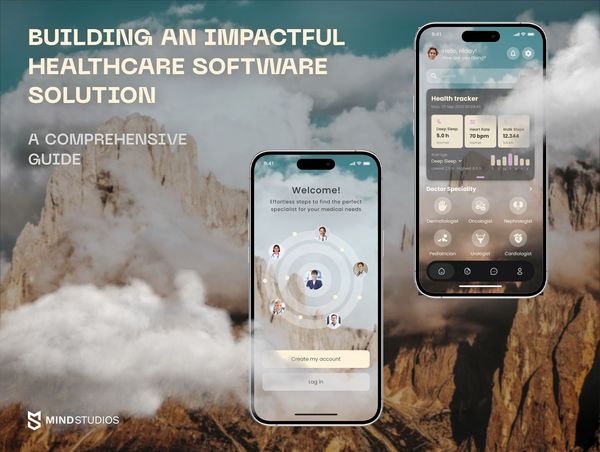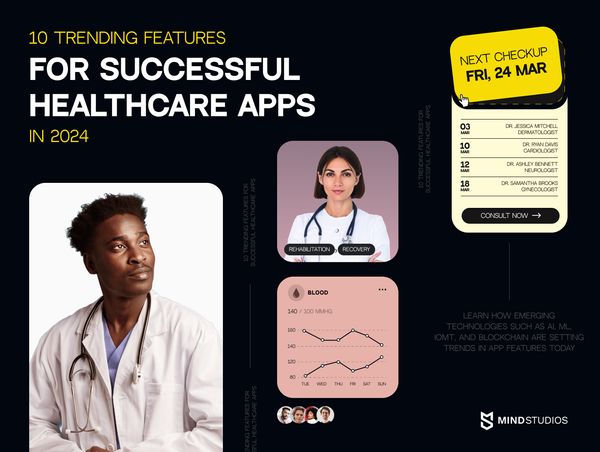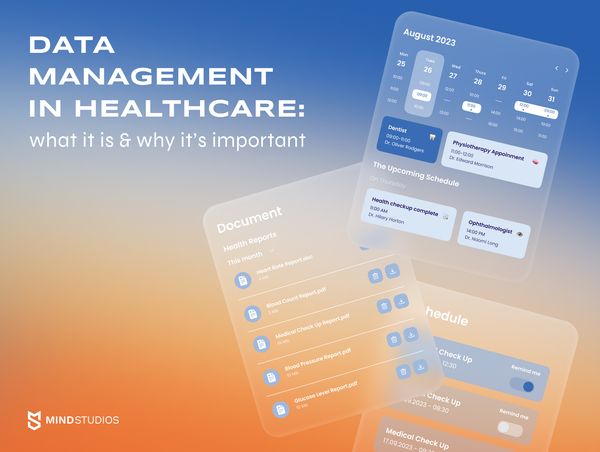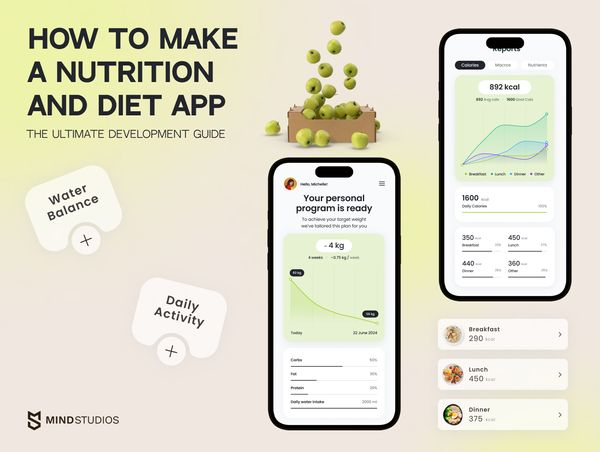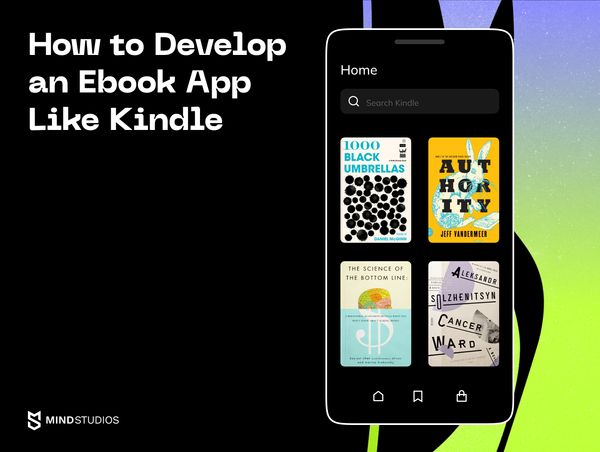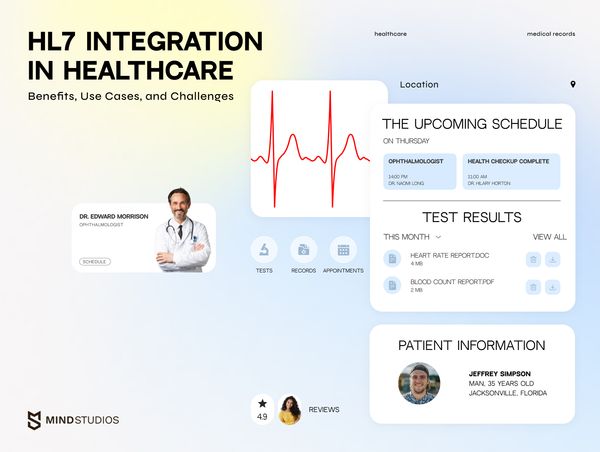
Now, it’s not breaking news that almost every healthcare provider stores and operates clinical data digitally. And, theoretically, it should make it easy to access the data from other healthcare facilities per request. Let’s say, you are a doctor, and you require the patient’s laboratory results provided by another clinic. Getting it in several clicks would be more time-saving than asking your patient to specifically bring/send them to you, right? But unfortunately, the diversity of systems and standards used in healthcare, especially for documentation, stops this situation from making it to the real world.
The problem is that every healthcare institution chooses the solution that suits them best: Hospital information system (HIS), Electronic medical record (EMR), Electronic health record (EHR), Lab information system (LIS), Radiology information system (RIS), Picture archiving and communication system (PACS), etc. Each of them uses their own “language” to communicate with healthcare systems, making it impossible to freely transfer clinical information between them. But it becomes possible with the help of HL7 standards.
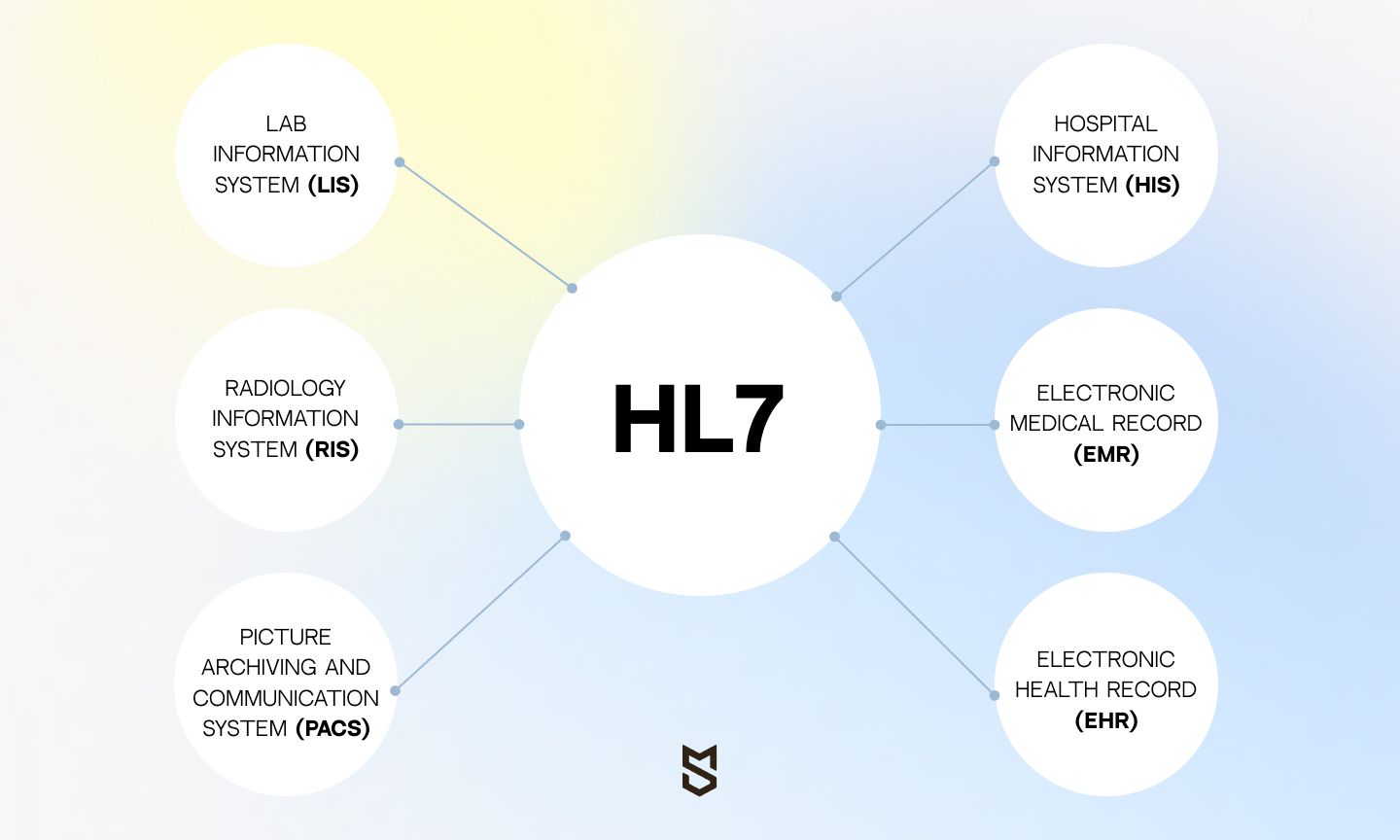
As Mind Studios specializes in providing custom healthcare software development services, we couldn’t overlook the benefits of HL7 integration into existing systems and applications. With more than ten years of experience in the niche, we are always happy to provide valuable insights on enhancing healthcare businesses with tech solutions. So, let’s now talk about how impactful HL7 can be.
First, we need to explain what HL7 in healthcare actually is.
What is HL7?
HL7 stands for Health Level 7 — an international framework for healthcare systems and applications to “communicate” and conveniently transmit patient data. In its name, “Level 7” points at the 7th layer of the Open System Interconnection (OSI) model created to unite the work of various software solutions and applications.
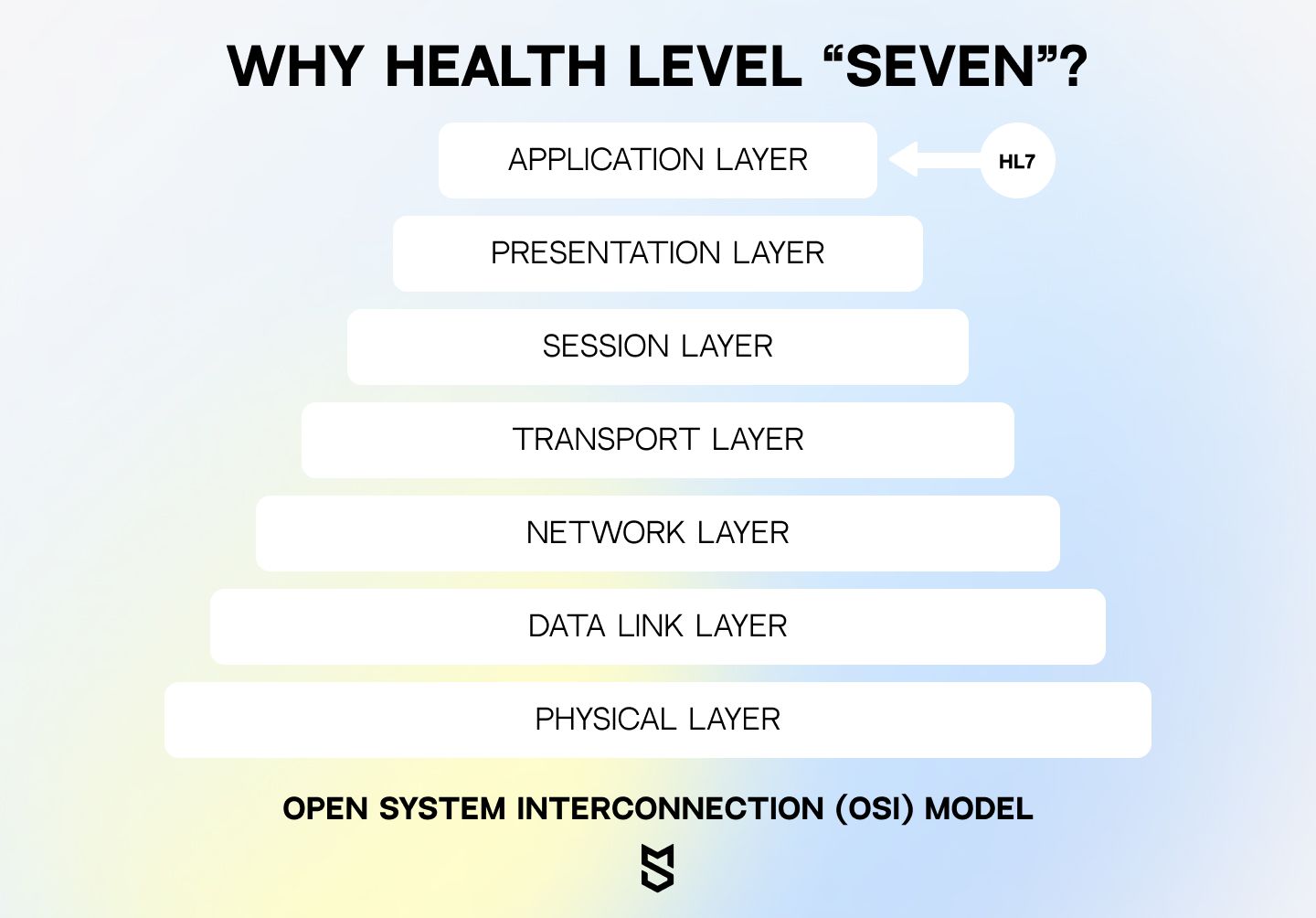
The 7th layer is the Application layer, and in the OSI model, it describes the interactions between applications, such as data transmission, its time frames, and potential errors.
In this article, we will be taking a closer look at HL7, discuss the benefits and challenges behind its integration, and share its top use cases in healthcare systems.
Existing HL7 models
The first version of HL7 was developed back in 1987, but nowadays, there is more than one version available for integration. Let’s briefly look at them:
| Version | Description |
|---|---|
| HL7 V2 | The most widespread version of HL7 framework for clinical data exchange that finds its place in many modern healthcare organizations |
| HL7 V3 | A more complex model, the next version of HL7 V2 that includes messages and documents |
| HL7 CDA | An HL7 V3 specification for clinical documents |
| HL7 CCD | A standard for medical summaries for patients in the US market |
| HL7 EHR | Models for managing EHR systems |
| HL7 FHIR | The newest version of a standard that is optimized for use with web-based APIs |
Benefits of HL7 integration
The benefits of adopting a unifying standard to manage diverse health information systems may seem pretty obvious, as the main point is to create a convenient data transmission route. Besides, HL7 benefits healthcare systems in more ways than one.
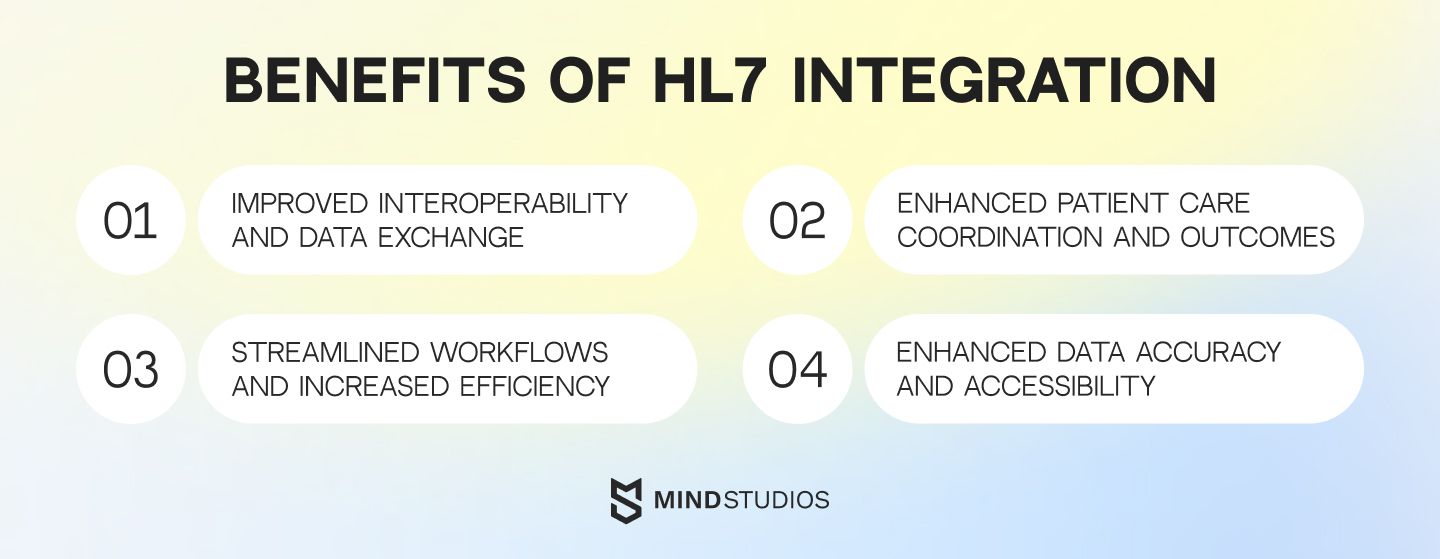
Let's dive deeper into the matter and determine the main benefits of HL7 integration into healthcare documentation systems.
Improved interoperability and data exchange
As we previously mentioned, a set of different document-managing systems are used across the wide world of healthcare, and ensuring their interoperability is the first step towards making them work as one mechanism.
HL7 makes it possible to create a seamless data exchange with the help of so-called triggers and unique message types. The standard turns a real-world trigger, such as patient registration, admission, discharge, order cancelation, and many more, into a sequence of symbols recognizable by the HL7 framework on the other side of data transmission.
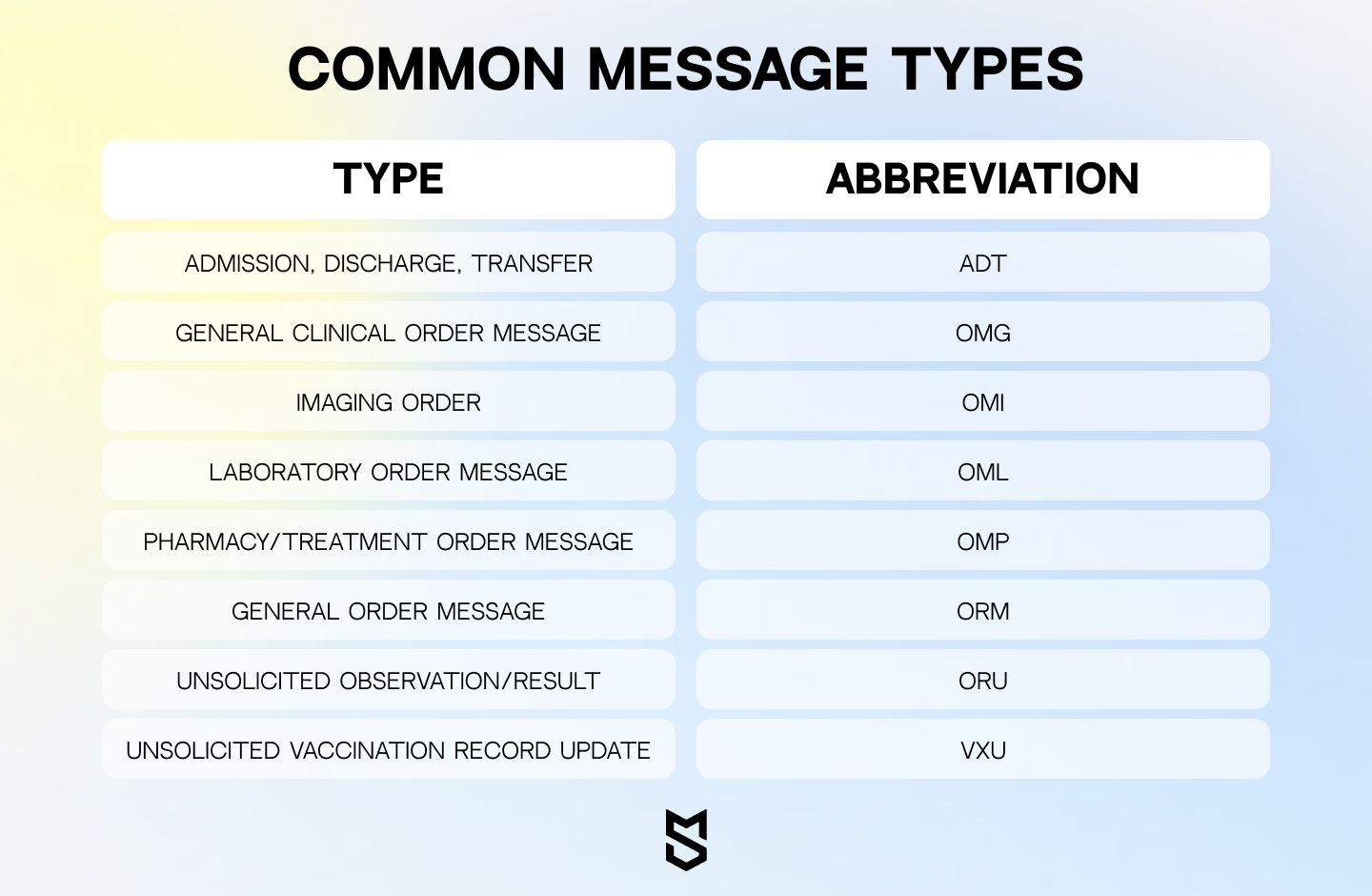
So, it doesn’t actually matter which system the healthcare institution or application is using for their records, as HL7 acknowledges a specific message type by its abbreviation code, encrypts it and seamlessly transfers it per request.
Enhanced patient care coordination and outcomes
In most health-related cases, time is crucial in providing thorough patient care. Thus, it requires all the processes to be effective, well-coordinated, and timely.
HL7 helps doctors and patients save precious time while getting essential clinical information from patients’ previous sessions/different institutions without the possibility of error due to the diversity of systems used for storing it. Adding the small amount of time it takes to receive every piece of patient data to the seamless data exchange, we get coordinated and effective patient care that generally improves outcomes and creates a convenient data ecosystem.
Streamlined workflows and increased efficiency
With the HL7 integration, documentation management also becomes less time-consuming for clinicians. With easy and automated access to any required information, doctors can focus more on patient care and don’t have to bother themselves with clumsy systems for clinical data.
Automating processes with HL7 significantly decreases error rates for incorrect data entries, reduces the number of manual tasks per specialist, and generally enhances the experience and time for handling digital documentation.
Enhanced data accuracy and accessibility
The diversity of documentation management systems across healthcare institutions and applications also means different data formats for exchanging and storing data. This makes the data vulnerable to transmission errors and negatively impacts its integrity.
HL7 framework uses standardized data exchange protocols with an established messaging system. The consistency of formats for data transmissions makes HL7 reliable in preventing errors and delivering accurate data.
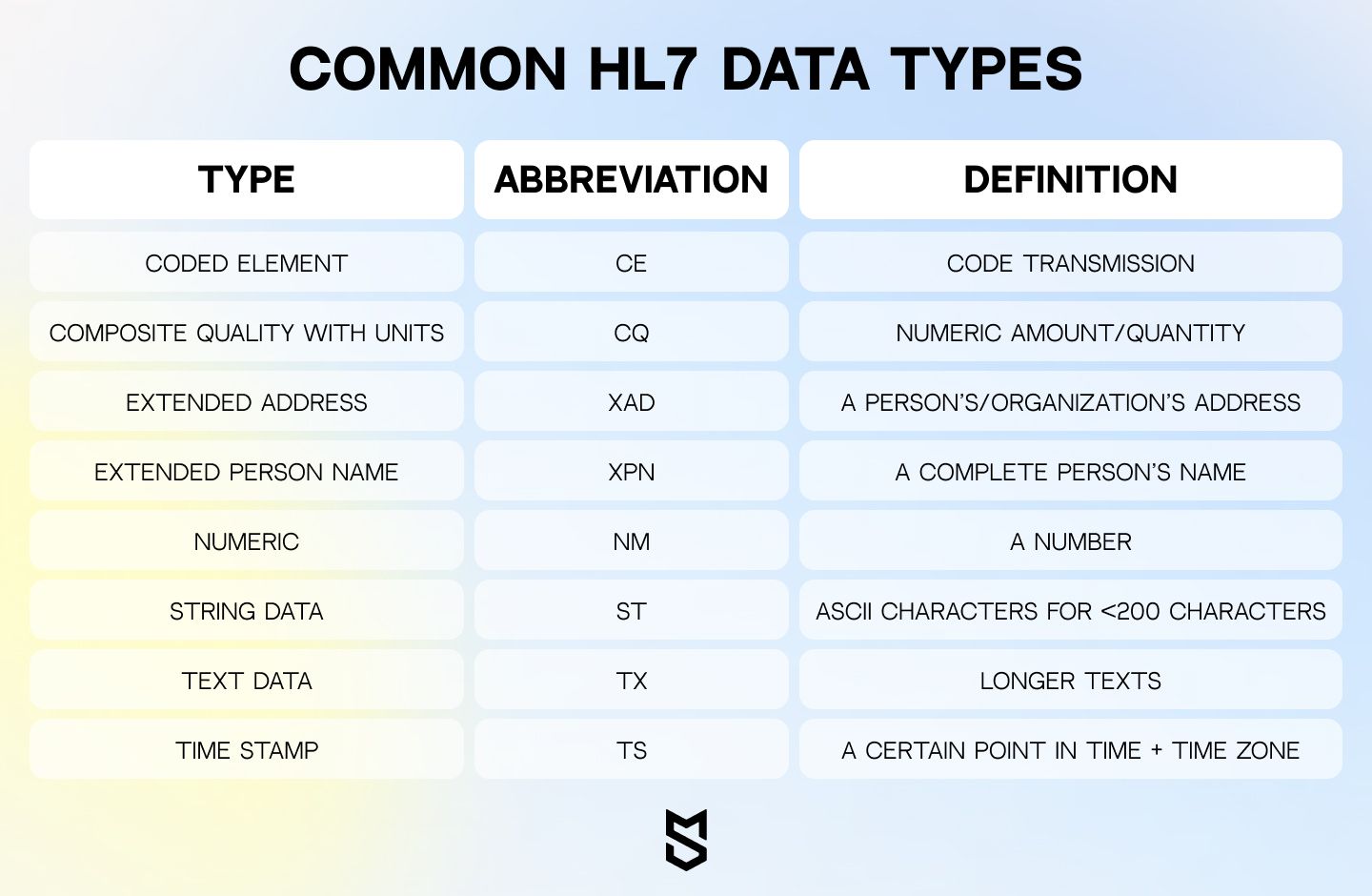
Use cases of HL7 integration
Now that the benefits of HL7 Integration in Healthcare are pretty clear, let’s form a better understanding of how and when it is used in modern healthcare solutions.
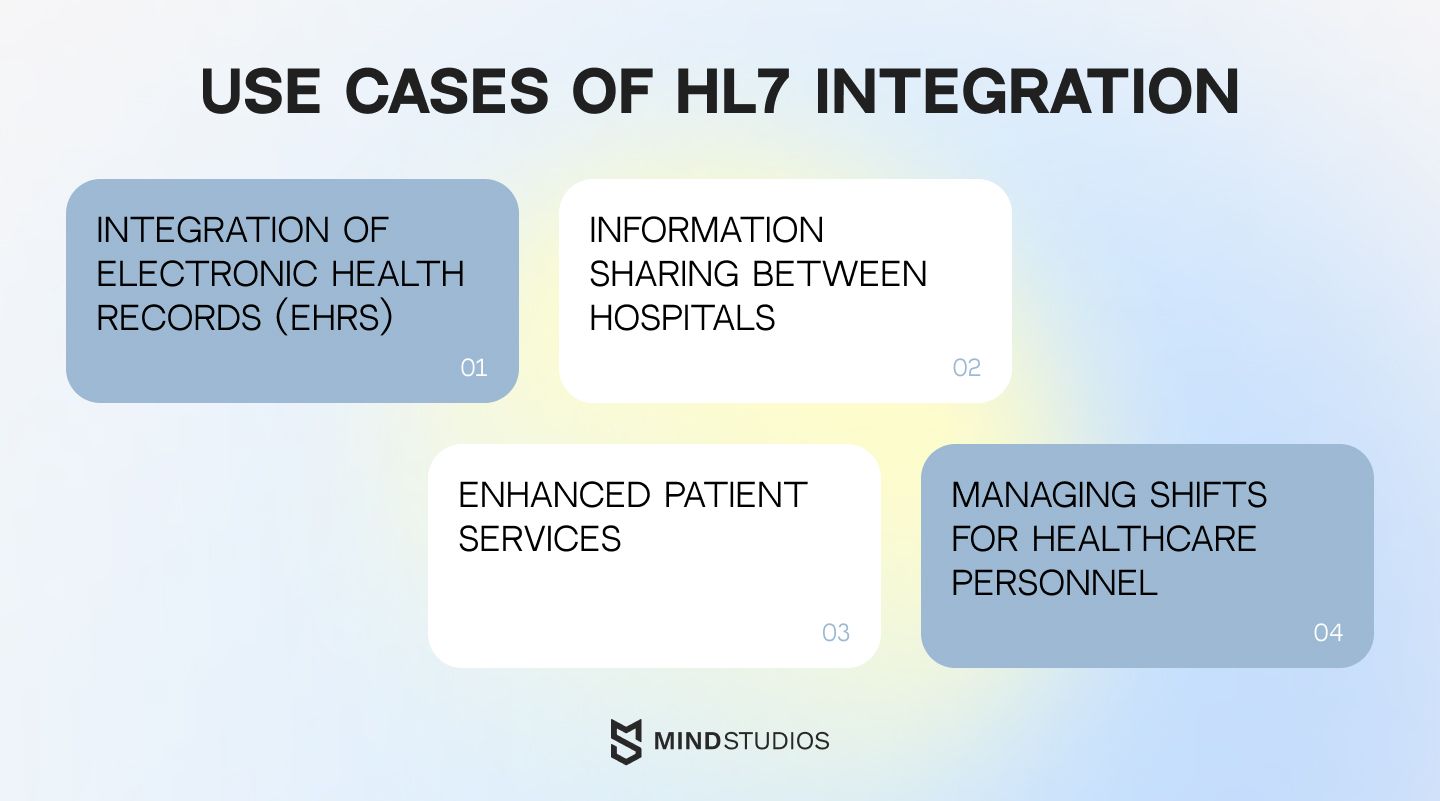
Integration of electronic health records (EHRs)
The HL7’s interoperability plays a key role when it comes to connecting EHRs from different facilities and providing an effective data transmission path. Integrating Health Level 7 into the electronic health records provides a secure, quick, and seamless patient data exchange. This, in turn, helps to enhance medical care and reduce time to obtain all necessary paperwork.
The algorithm for getting information from a different EHR with HL7 integrated is quite simple:
- A doctor creates a request for patient data from facility A to facility B.
- The HL7 framework turns the request into a specific message format sent to another EHR with the needed data.
- The other EHR gets the request, and if the access is granted, finds the required information, encrypts it with HL7, and sends it back.
- Now, the first EHR gets all the data, decrypts it with HL7, and, from now on, stores it.
As a doctor, you get easy access to every patient’s laboratory results, previous diagnoses, and prescriptions from the patient’s electronic records. As a patient, you don’t need to worry about remembering and storing excessive paperwork from other institutions just not to miss something.
Since the data is encrypted en-route, patients' data is safe during transfer. Here's an example of a message encrypted by HL7 that contains patient information:
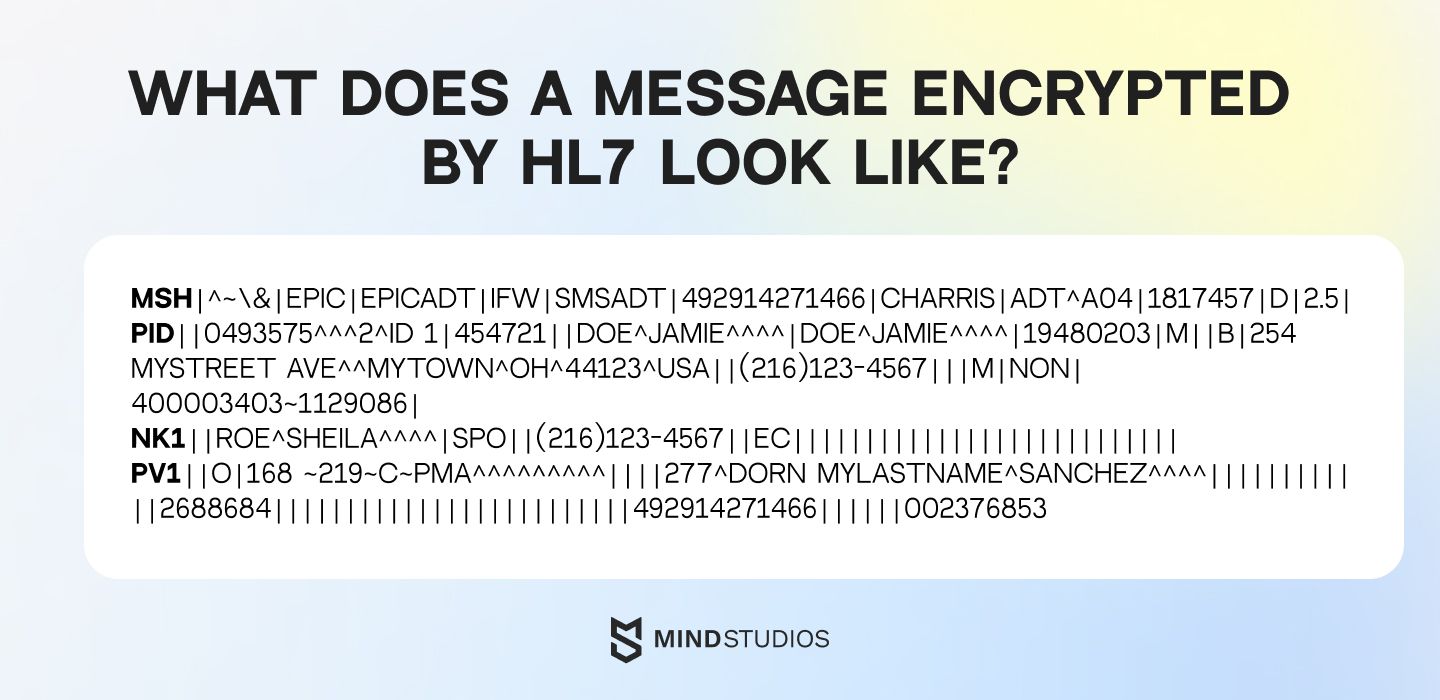
Information sharing between hospitals
By integrating HL7, hospitals “sign up” for the common framework, which can be used to effectively exchange essential patient data at any given time. In the case of complex medical cases that require extra attention, with the help of HL7, hospitals can create a joint base of knowledge that would be easy to access. This way, HL7 significantly impacts the time required to get all the information and lets healthcare providers focus more on the client's care.
Managing shifts for healthcare personnel
HL7 is also commonly used as a scheduling assistant, helping employees effectively manage the workload, avoid overworking, and raise productivity. With this convenient framework, you can store all essential administrative data regarding your employees, manage their shifts, optimize the workload, and receive feedback about work conditions. Thus, you can enhance the overall effectiveness and even improve your hospital’s image as a workplace.
Enhanced patient services
Health Level 7 is not only about maintaining internal processes, it’s also productively used as a method of communication between doctors and patients. Convenient appointment scheduling system, regular reminders for patients to take their prescriptions, refill them, or book a meeting. Every aspect like this increases the patient’s satisfaction, making them more loyal and helping them adhere to their regimen.
Challenges of HL7 integration
Among the great benefits, there also lie challenges in HL7 integration. And to see the bigger picture of whether the framework is worth integrating, we are going to take a closer look at them.
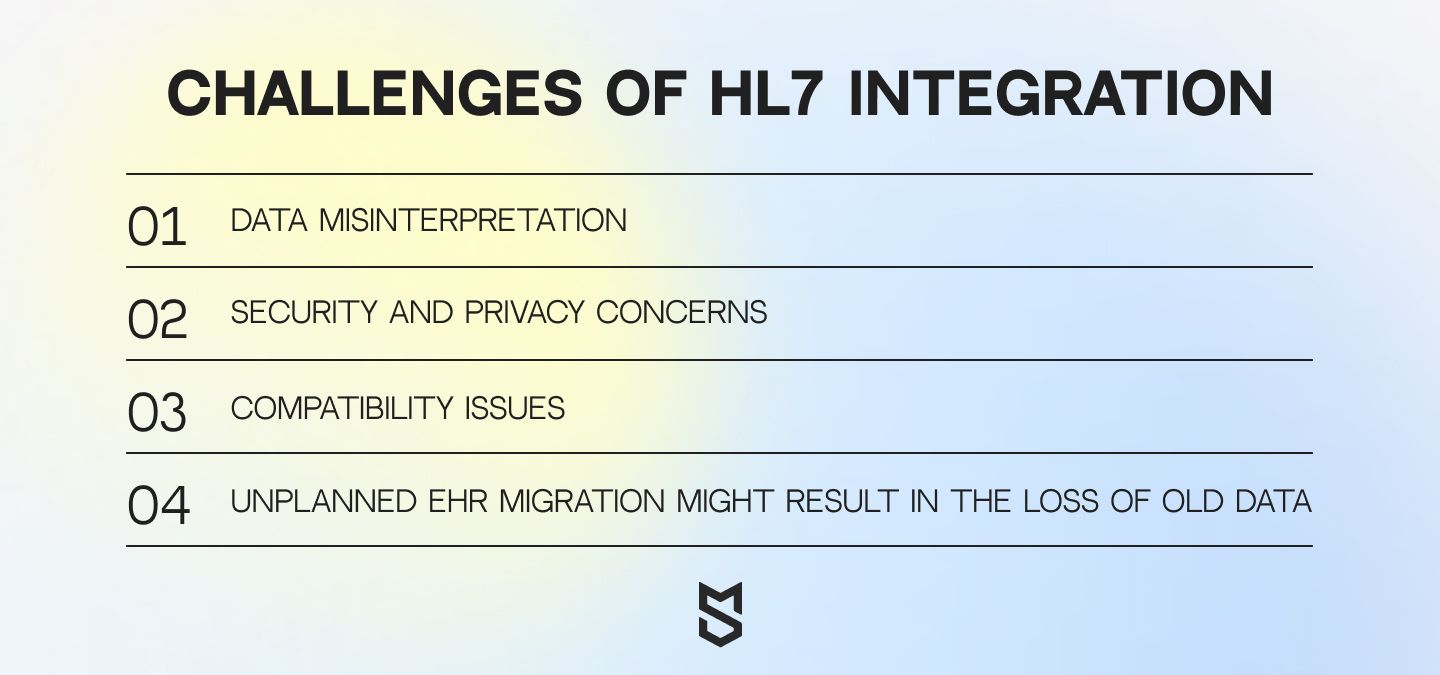
Data misinterpretation
Although the HL7 is known for creating standardized data formats for precise data transmissions, it also brings a challenge to the table. The issue is that different systems may have different meanings for the information transferred by HL7, causing a misinterpretation and potentially leading to critical mistakes.
We can see the difference when, for example, in one system, attribute “1” in a particular field means that a person currently has alcoholism, and another system interprets it as “non-alcoholic”. This leads to a misleading diagnosis, causing a patient to undergo the wrong medical treatment because of the system differences.
Also, to make sure that the two different versions of HL7 are completely compatible, an additional testing stage might be necessary before final implementation, which is costly in terms of resources and time.
The solution here is to ensure that the implemented version not only exchanges data but also understands the parameters it puts there. By the “understanding” part, we mean following the interoperability guidelines created by the combined effort of the HL7 community and the HL7 Architecture Board.
It is called the HL7 Services Aware Interoperability Framework (SAIF), and it was developed to address the challenges of data misinterpretation, among others. So, to help the standard get a better hold of what it is transmitting exactly and to avoid errors regarding data semantics, adopting a combination of HL7 + SAIF is the best choice.
Security and privacy concerns
In the healthcare industry, security and privacy are the two vital words. Managing tons of sensitive data about their patients and staff requires the highest level of protection, which HL7 has problems maintaining. Some resources even refer to a standard as a “fundamental flaw in healthcare IT.”
In a messaging format used by HL7, there is a place for encryption, yes. However, the currently used encryption method converts a request into a set of symbols with indicators that are actually understandable to everyone. As a result, there is nothing that can stop potential intruders from decrypting the message in a second.
According to Forbes, some enthusiasts from the University of California decided to test the standard’s security by conducting continuous cyber-attacks. And the results were frightening. Turns out that intruders can not only gain access to sensitive data in HL7 messages but also can modify the parameters like medical diagnoses.
Therefore, to be safely applicable to the healthcare industry, HL7 requires additional security measures to protect the data. By using an additional encryption layer, establishing data exchange via secure protocols, and controlling the limited access to data transmission, we can forget about the biggest flow of Health Level 7 and ensure the security of sensitive information.
Compatibility issues
Unfortunately, HL7 as a framework is not backward compatible with its previous versions. This means that HL7 version 3 won’t work with the second version of HL7. It is compatible when connecting models from the same version, though. Thus, HL7 V2.5.1 will be compatible with HL7 V2.3.1 and will be programmed to ignore unexpected issues and work as it is meant to. This also applies to HL7 V3 and HL7 FHIR, letting them prioritize workability instead of alerting unknown features from the newer version.
For every institution that plans to or has already integrated Health Level 7, it’s recommended to stay up-to-date with their models and ensure that they have the most recent version for greater compatibility. Or you can just stick to the V2 version (as it is still used in 95% of healthcare organizations in the US) until the newest ones become more widespread and globally shared.
Unplanned EHR migration might result in the loss of old data
Data loss is definitely among the top scenarios that every business fears experiencing. Especially talking about healthcare, with sensitive information all over the databases, it becomes crucial to store it securely. There are different ways of handling this issue, yet not a single one of them is effective enough to make the migration process less risky. The Health Level 7 is not an exception.
In some cases, institutions tend to maintain several EHR systems to have a backup in case of unexpected data loss. However, to manage it, they require twice as much of their employees’ time to add every patient's information. From a productivity perspective, only storing medical records on paper could be worse (which some institutions still consider as a way out of the situation).
We recommend conducting migration step-by-step. To minimize the impact of potential data loss during the transmission, start by migrating critical information, ensure transmission security, and proceed to the less important data. This way, you won’t have to restart the whole process in case of unexpected errors and will keep already transmitted data safe until you continue the migration.
Conclusion
The idea of HL7 unifying the healthcare systems' communication languages into one standard sounds impressive. However, the challenges behind its integration will need more resources to deal with, making enthusiasts and researchers doubtful.
In our opinion, with a proper plan on how to avoid and handle particular challenges, the benefits behind its integration make it a desirable solution for many healthcare institutions and applications. And yet, you won’t see HL7 in a list of healthcare technologies to follow in a model version that exists as of today.
If you have additional questions regarding the HL7 integration and whether it will suit your business, let us know. We are always happy to help your ideas make their way to enhance your business. Just fill out the contact form, and our experts will be right back to offer you a 45-minute consultation.

